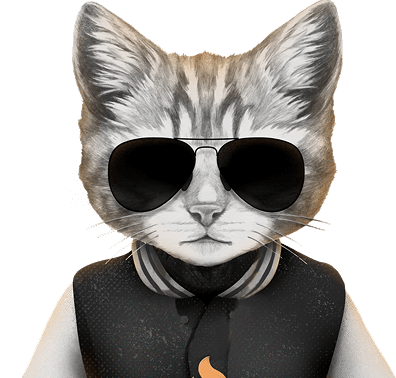
Not unlike other industries, influencer marketing has become an increasingly popular and effective way for fashion brands to connect with their ideal consumers. By partnering with noteworthy public figures with a dedicated following, fashion brands can capitalize on their reach and trustworthiness to better engage with their target market and improve their brand in the eyes of consumers. If you’re looking to understand the ways in which fashion brands leverage influencer marketing to create successful, effective marketing campaigns, as well as get a sneak peek at their best practices, then just keep reading.
Which influencer marketing tactics are fashion brands using?
There are 5 main avenues that fashion marketers use to reach their audiences via influencers. These are:
Sponsored content: Working with influencers to create sponsored content helps brands to promote their products or services. Examples include sponsored posts on Instagram or TikTok, sponsored blog posts, or even videos on platforms like YouTube.
Events: Fashion brands often host launch events or exclusive parties – and sometimes, they recruit influencers to appear at events and create content while in attendance, or even to host or give talks.
Exclusive products: Product collaborations are becoming increasingly popular as a way to create hype and specifically appeal to an influencer’s audience. Usually, these items will feature the influencer in marketing and advertising too.
Giveaways and contests: By partnering with influencers to give away their products or services, brands can further promote their offerings to a wider audience and increase brand awareness.
User-generated content: Fashion brands can also encourage influencers to create user-generated content featuring their product catalog. This allows creators to show the products in action and share their personal experiences with their followers and in turn, can drive engagement and sales.
These methods offer brands a multitude of ways to connect with audiences. Of course, it’s still vital for brands to find the right influencers to partner with and select influencer marketing tactics that best align with their overall goals, needs, and marketing strategy. Let’s take a look at them in further detail.
Sponsored content: recruiting influencers for promotion
Sponsored content refers to content that is created by an influencer in exchange for payment from a brand. This content can be used to promote a specific product or service, or it can be more general in nature and simply showcase the brand in a more casual, easily digestible manner. Sponsored pieces typically come in post, story, or video format.
An oft-seen approach on social media, sponsored content can be a powerful way for brands to reach and engage with their target audience. It allows brands to utilize influencers’ established social media platforms to reach large audiences, whilst also capitalizing on their perceived credibility and the trust their followers have in them.
When creating sponsored content, it's very important for both brands and the influencers they work with to be transparent and disclose that the content is sponsored. Not only is it considered an ethical business practice in the influencer marketing space, but it also helps to maintain the trust of the influencer's followers and ensure that the content is perceived as authentic and genuine.
Many brands make use of sponsored posts through influencers, and there is no cut-and-dry method to doing it – in fact, many brands take a creative approach that extends beyond their scope to make campaigns interesting, and stand out amongst consumers. The major British luxury brand Burberry, despite focusing on fashion and accessories, ran a successful campaign in partnership with Sebastian Jern, who is actually a visual artist and filmographer from Sweden. The result was perfect for a promotion in the winter season, and was well-received by audiences, not to mention it had very clear disclosure as to its partnered nature.
Another example was the celebrated fashion house Versace partnering up with Huh Yun-Jin, a member of the up-and-coming girl band Le Sserafim who is currently seeing a stark rise in the Kpop community. This industry cross-over is a clever tactic to introduce otherwise-disconnected communities to one another, and capitalize on their popularity. Again, the sponsorship was both clearly stated and generated a positive sentiment from Yun-Jin’s fans.
Events: getting influencers on board for real-world promotions
Hosting events is another way for fashion brands to increase their presence and connect with target audiences. By partnering with influencers to host or attend events, brands have the opportunity to create unique and memorable experiences for the influencer’s followers – and potentially gain new customers along the way.
There is no one “cut and dry” way for brands to get influencers on board for events. For example, fashion brands can invite influencers to participate in fashion shows or launch events where they can showcase the brand's products or services to a large audience. Alternatively, they can also work with influencers to host smaller, more intimate events, such as trunk shows or pop-up shops, which could be beneficial for the right brand or product.
Fendi, one of the prominent designer brands in the Italian luxury market, has hosted a plethora of events involving influencers to promote new launches, and push their overall brand. To keep things fresh and tailor their events around certain experiences or to poise themselves in a particular way, they’ve worked with different influencers at events with entirely varying looks and feels – for example, they worked with Dubai-based influencer Tutus Kurianati, a fashionista and mother, on a launch that took place near the Burj Khalifa in Dubai, United Arab Emirates. Conversely, they also hosted an event in Geneva, Switzerland, with attendees including the likes of Adrien Maximilien, an entrepreneur. This event instead had a more subdued, classy feel, and focused on drinks and spirit tasting with an entirely different mood. This goes to show that brands can push beyond the expected, trying different approaches to appeal to numerous markets at once.
Exclusive products: collaborating with influencers to create unique experiences
Limited edition products generate plenty of hype and excitement, so running influencer collaborations to launch specialized products is a great way to generate buzz among target audiences. While a product of this nature could technically appeal to any of a brand’s general consumers, exclusive products tend to appeal most to the influencer in question’s followers or fan base, so it would generate the most engagement or conversions and sales from this group.
Fashion brands can run exclusive launches with influencers in several ways. For example, they could work with influencers to design limited-edition products that incorporate the influencer’s brand in order to appeal to their followers – or brands could work with influencers to create exclusive discounts or promotions for their followers.
There are a few cases of successful, on-brand influencer collaborations to draw inspiration from. One such example is The Salty Blonde X SKATIE collab, a fusion of work from the Los Angeles-based swim and activewear brand and easy-going, beach and lifestyle influencer Halley Elefante. This collab involved Halley herself picking out garments and prints to create a limited swimwear line with SKATIE – it also made plenty of sense as the brand is heavily focused on sustainability, while Halley is known as a tech-averse, beach-going influencer that matches the brand’s target audience.
Another more traditional example in the fashion space was the Tommy x Zendaya collaboration, a blend of work between the ever-popular American apparel brand Tommy Hilfiger and Hollywood celebrity and singer Zendaya. The duo has worked on two collabs together, with this collection having its debut at New York Fashion Week, a landmark event in the American fashion space. The collection made a lot of sense in that the style of clothes Tommy’s brand promotes in the higher fashion spaces aligns very well with Zendaya’s own fashion sense, focusing on bold patterns and pieces with a particular ode to vintage looks. The cherry on top was an exclusive design sold as part of the collaboration with the sole purpose of generating proceeds for a charity organization in New York itself, achieving good whilst also pushing for a ‘limited product’ for potential consumers.
Giveaways and contests: incentivizing influencers to promote products or services
Giveaways are a very popular method that is commonly seen on Instagram among influencer circles. These giveaways can be run by one brand working with a specific influencer, or alternatively, multiple brands could work together to create a larger giveaway bundle and recruit several influencers for the campaign. Generally, these contests require followers to engage with the brand in some way, for example by creating user-generated content or sharing a post about the brand.
When using giveaways and contests in influencer marketing campaigns, fashion brands need to establish clear rules and guidelines for the promotion. This might include requirements for how the giveaway or contest is promoted, how winners are selected, and any other terms and conditions. By setting clear rules, fashion brands can ensure that their influencer marketing efforts are fair and transparent.
User-generated content: leveraging influencers to create authentic and engaging content
User-generated content (UGC) refers to content that is not created by the brand itself for advertising purposes, but rather by general users or influencers, and can be repurposed by the brand for marketing purposes. This type of content is gaining traction on social media platforms, with many brands reposting content that originates from creators’ accounts.
There are a few ways that fashion brands can encourage the creation of such content. For example, they can work with influencers to create sponsored posts or videos featuring their products or services, getting them to showcase the products in action and give followers a sense of how they can be used in real-life situations. Alternatively, they can also encourage influencers and other users to create UGC as part of a contest or challenge, which could be a great way to drive engagement and brand awareness for the campaign’s tenure.
As with most things, it's important for fashion brands to establish clear guidelines for user-generated content. This might include requirements for how the content is promoted, how it should be tagged or credited, and any other terms and conditions. These guidelines ensure that both parties are protected, and that content is utilized by the brand in a fair and pre-approved way.
Tips for working with fashion influencers
It’s good to keep best practices in mind when using influencer marketing in your strategy. Here are a few crucial tips and tricks that can make all the difference to your campaigns.
Research and choose the right influencers: It's vital to choose influencers who fit your brand and have a genuine interest in your products or services. Look for influencers who have a dedicated and engaged following and who align with your brand values and messaging.
Set clear goals and objectives: Establish a clear aim for your influencer marketing campaign and make sure that the influencers you work with understand your goals. This will ensure that your efforts are focused and align with your brand’s desired outcomes.
Be transparent and disclose sponsorships: Transparency is crucial in influencer marketing, so don’t forget to disclose your partnerships with influencers. This can help to maintain the trust of the influencer's followers and ensure that the content is perceived as authentic and genuine.
Communicate and collaborate: When everyone is on the same page, it’s far more likely that things will go smoothly. This can help improve your chances of running a successful and seamless influencer marketing campaign.
Measure and track results: Doing this regularly will help give you an idea of how effective your campaigns are at driving engagement and revenue. In turn, this can help you optimize your influencer marketing strategy and make informed decisions about future campaigns.
By following these tips, you can save yourself potential headaches down the line and help to better ensure that your influencer marketing campaigns are more effective.
Conclusion: the role of influencer marketing in the fashion industry
Influencer marketing plays a significant role in the fashion industry, as it allows fashion brands to reach and engage with their target audience in a more authentic and personal way. Leveraging these relations allows brands to drive engagement and conversions to a wider audience.
It is however important to make sure that the tactics you use align with your brand, and that they will also be effective in reaching your specific goals. With the right approach, adequate research, and respected influencers on your side, influencer marketing might just help you elevate your influencer marketing strategy and net you even better results.














